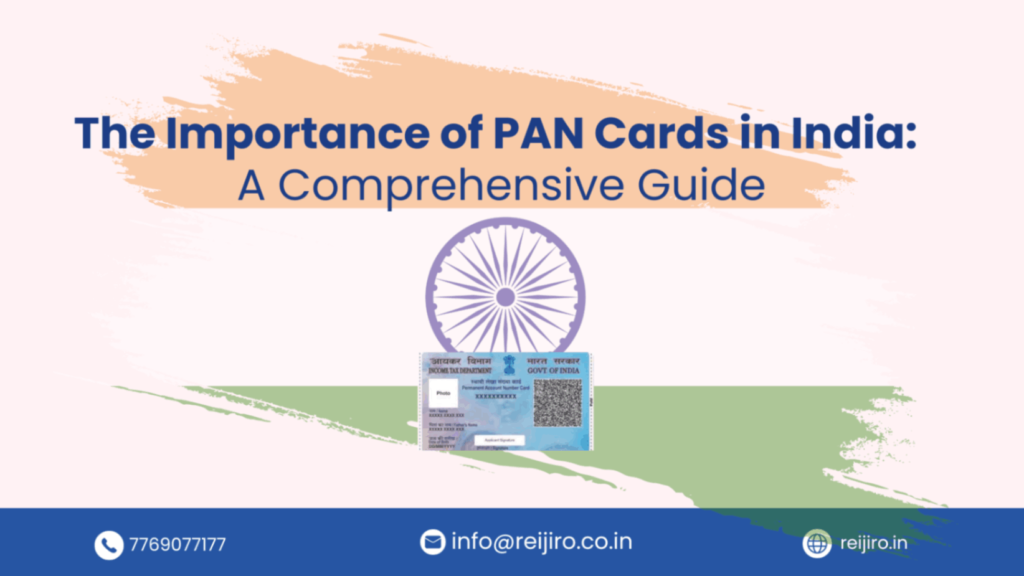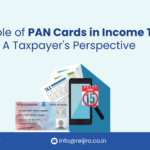The Importance of PAN Cards in India: A Comprehensive Guide
Introduction
The Permanent Account Number (PAN) card is a fundamental aspect of India’s financial landscape, touching the lives of every citizen and taxpayer. This comprehensive guide aims to unravel the layers of importance associated with PAN cards in India. From its inception to the multifaceted roles it plays, we will delve into the comprehensive world of PAN cards.
Understanding PAN Cards
What is a PAN Card?
A PAN card, or Permanent Account Number card, is a unique identification number issued by the Income Tax Department of India. It serves as a universal identifier for individuals, businesses, and entities involved in financial transactions. The PAN card is a 10-character alphanumeric code that is unique to each cardholder. This identification number is essential for various financial activities, including filing income tax returns, opening a bank account, making investments, and engaging in high-value transactions.
The structure of a PAN card is designed to carry specific information about the cardholder. The first five characters represent letters, the next four are numbers, and the final character is again a letter. Each section of the code has a specific meaning, helping authorities and financial institutions verify and track transactions associated with the card.
Structure of a PAN Card
Breaking down the structure reveals that each character in the PAN card has a specific significance. Understanding this structure is crucial for interpreting the information encoded in the card.
The structure of a PAN (Permanent Account Number) card in India is a 10-character alphanumeric code that is unique to each cardholder. The PAN card structure is designed to convey specific information about the cardholder. Here’s a breakdown of the structure:
First Five Characters (Alphabetic):
- The first five characters are letters of the alphabet.
- These letters are randomly generated and do not convey specific information.
Next Four Characters (Numeric):
- The next four characters are numbers (0-9).
- These numbers are also randomly generated and do not carry specific information.
Last Character (Alphabetic):
- The last character is again a letter of the alphabet.
- This character is a checksum, calculated based on the preceding nine characters. It helps ensure the validity of the PAN card number.
- Here’s an example of a PAN card number to illustrate the structure: ABCDE1234F
- ABCDE: First five characters (alphabetic) – randomly generated.
- 1234: Next four characters (numeric) – randomly generated.
- F: Last character (alphabetic) – checksum.
It’s important to note that while the first five and next four characters are randomly generated, the combination of the entire 10-character PAN number is unique to each individual or entity. The PAN card serves as a crucial identification tool for various financial and tax-related transactions in India.
The Significance of PAN Cards
Universal Identification
PAN cards serve as a universal identification tool, ensuring transparency in financial transactions. This section explores how the PAN card acts as a common thread linking various economic activities.
Financial Transactions
From opening a bank account to making investments, PAN cards are integral to numerous financial transactions. This part delves into the seamless integration of PAN cards in these processes, making them a prerequisite.
PAN Cards and Income Tax
Mandatory Requirement
Focusing on the mandatory nature of PAN cards for income tax purposes, this section explains how possessing a PAN card is essential for fulfilling tax obligations.
Income Tax Return
A detailed exploration of how PAN cards simplify the income tax filing process. It elaborates on their role in reporting salary, property transactions, and investments, ensuring a comprehensive approach to tax compliance.
PAN Cards and Financial Planning
Banking and Investments
The importance of PAN cards in banking transactions and investments is highlighted. From opening accounts to stock market dealings, PAN cards contribute significantly to an individual’s financial portfolio.
Property Transactions
For those venturing into property dealings, the PAN card becomes a critical component. This section elucidates how it aids in legitimizing transactions and curbing the flow of black money in the real estate sector.
Updating and Verifying PAN Card Details
Importance of Accuracy
Emphasizing the significance of accurate information, this section stresses the need for regular updates and verifications of PAN card details. Outdated or incorrect information can lead to complications during financial transactions.
Online Methods for Updates
Providing a user-friendly guide on online methods for updating and verifying PAN card details. This ensures that individuals can easily maintain accurate information, reducing the likelihood of errors.
Conclusion
In conclusion, the PAN card stands as a linchpin in the financial framework of India. Its importance goes beyond a mere identification document, permeating into the realms of income tax, financial planning, and transparent transactions. This comprehensive guide endeavors to equip individuals with the knowledge needed to navigate the nuances of PAN cards. By understanding its significance and ensuring accurate information, every citizen can actively contribute to the efficiency and transparency of India’s financial ecosystem.



